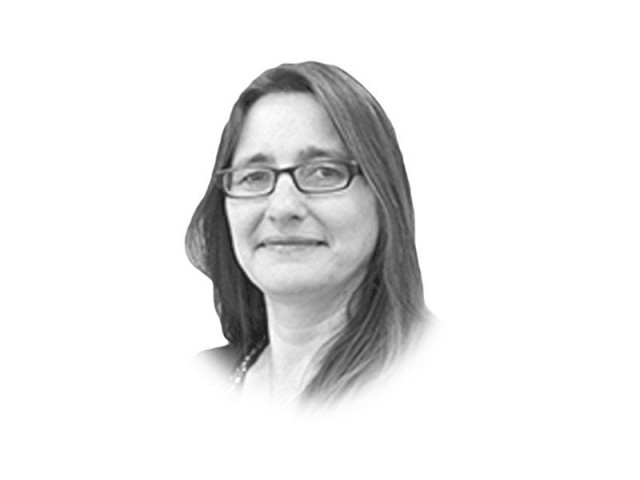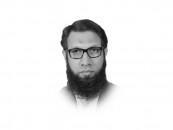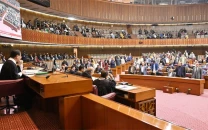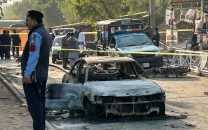Investing in quality teachers
Analysis of ASER Pakistan data draws attention to need for policymakers to focus their attention on government schools

The writer is an adviser at ASER Pakistan and professor of International Education at the University of Cambridge

It is important to delve deeper into the ASER data to understand who is in school and, amongst these children, who is learning. In terms of access, our recent analysis finds that while the vast majority of rich girls and boys in rural Pakistan are in school, over 40 per cent of poor rural girls aged 10-12 have never even been to school. Amongst those in school, there is a wide variation in the type of school to which children from different backgrounds gain access. ASER data show that private schooling is a growing phenomenon in Pakistan: between 2013 and 2014, the proportion of children enrolled in these schools has increased from 20 per cent to 24 per cent. Amongst those surveyed, only around 10 per cent of those in school from the poorest households in rural areas are in private schools, compared with 40 per cent of those from the richest households. In addition, there is a clear gender divide amongst the poorest in rural Pakistan: the poorest girls are 31 per cent less likely to attend private schools than are the poorest boys.
ASER data provide further important insights into who is learning. Amongst 10 to 12-year-olds in rural government schools, who should have reached grade five, one-third cannot read sentences. While those in rural private schools are faring better, it is still a cause for concern that more than one-fifth of children in these schools cannot achieve this task, which they would be expected to have reached by grade two. Overall, wealth is of far greater importance than whether a child is in a government or private school. More rich children in government schools are learning than are poor children in private schools. And within both government and private schools, poorer children are around three times more likely to be unable to read a paragraph than richer children in the same type of school.
There could be a number of explanations for the wealth gap in learning. One possibility is that children from richer households are more likely to be able to pay for private tuition to compensate for the poor quality of schooling. This is indeed the case in rural Pakistan according to ASER data: 18 per cent of rich boys having access to private tuition compared with just three per cent of poor girls. However, private tuition still does not wipe out wealth differences in learning, suggesting that other factors are important. The poorest performing groups of richer children (those at government schools who do not receive private tuition) outperform the best performing groups of poorer children (those at private schools who do receive private tuition).
Overall, analysis of ASER Pakistan data draws attention to the need for policymakers to focus their attention on government schools given that this is not only where the majority of the poorest children are studying, but also where learning levels are the lowest. The fact that rich children in government schools are learning indicates that we ought not to dismiss out of hand the role that government schools can play.
To ensure the most disadvantaged children in government schools are learning, there is an urgent need to invest in more teachers and in the quality of teachers. One outcome of an insufficient number of teachers is resulting in children of different ages studying in the same class. According to ASER findings, 43 per cent of grade two children in government schools are studying in the same class as children in other age groups, compared with 25 per cent in private schools. Teachers are unlikely to be prepared for teaching such multi-grade classes. Only 33 per cent of teachers in government schools covered by the ASER survey have graduated, compared with 39 per cent in private schools. It is a further cause for concern that more than one in 10 government school teachers were reported to be absent. Understanding the reasons for their absenteeism and tackling them is needed to ensure that children’s learning does not continue to suffer.
The abysmal situation in learning in Pakistan is reflected around the world: globally, 250 million children are not learning the basics in reading and mathematics, according to Unesco’s 2014 Education for All Global Monitoring Report. Around half of these children have spent at least four years in school, suggesting that they are receiving an extremely poor quality of education. Children who are disadvantaged due to circumstances at birth are most likely to be amongst those who are not learning, whether because they are born into poor households, live in rural areas, have a disability, or are girls. To change this situation, governments around the world need to invest in the education system’s most important resource: its teachers. World leaders will meet at the United Nations in New York in September to agree new global development goals to be achieved by 2030. Learning lessons from ASER will be a vital contribution to ensuring that they fulfill their promises that all children, regardless of circumstance, are learning the basics by 2030.
Published in The Express Tribune, January 9th, 2015.
Like Opinion & Editorial on Facebook, follow @ETOpEd on Twitter to receive all updates on all our daily pieces.














COMMENTS
Comments are moderated and generally will be posted if they are on-topic and not abusive.
For more information, please see our Comments FAQ